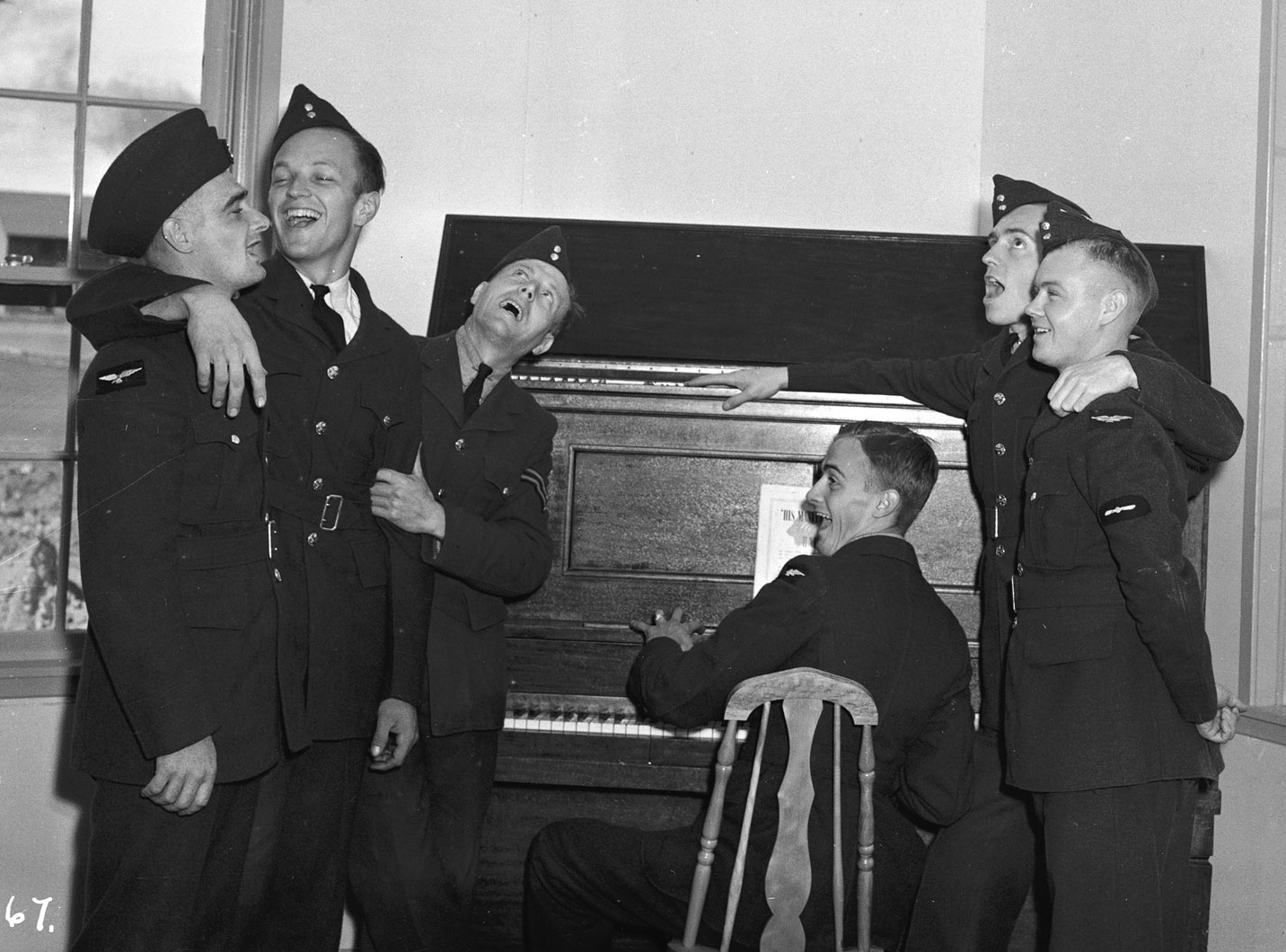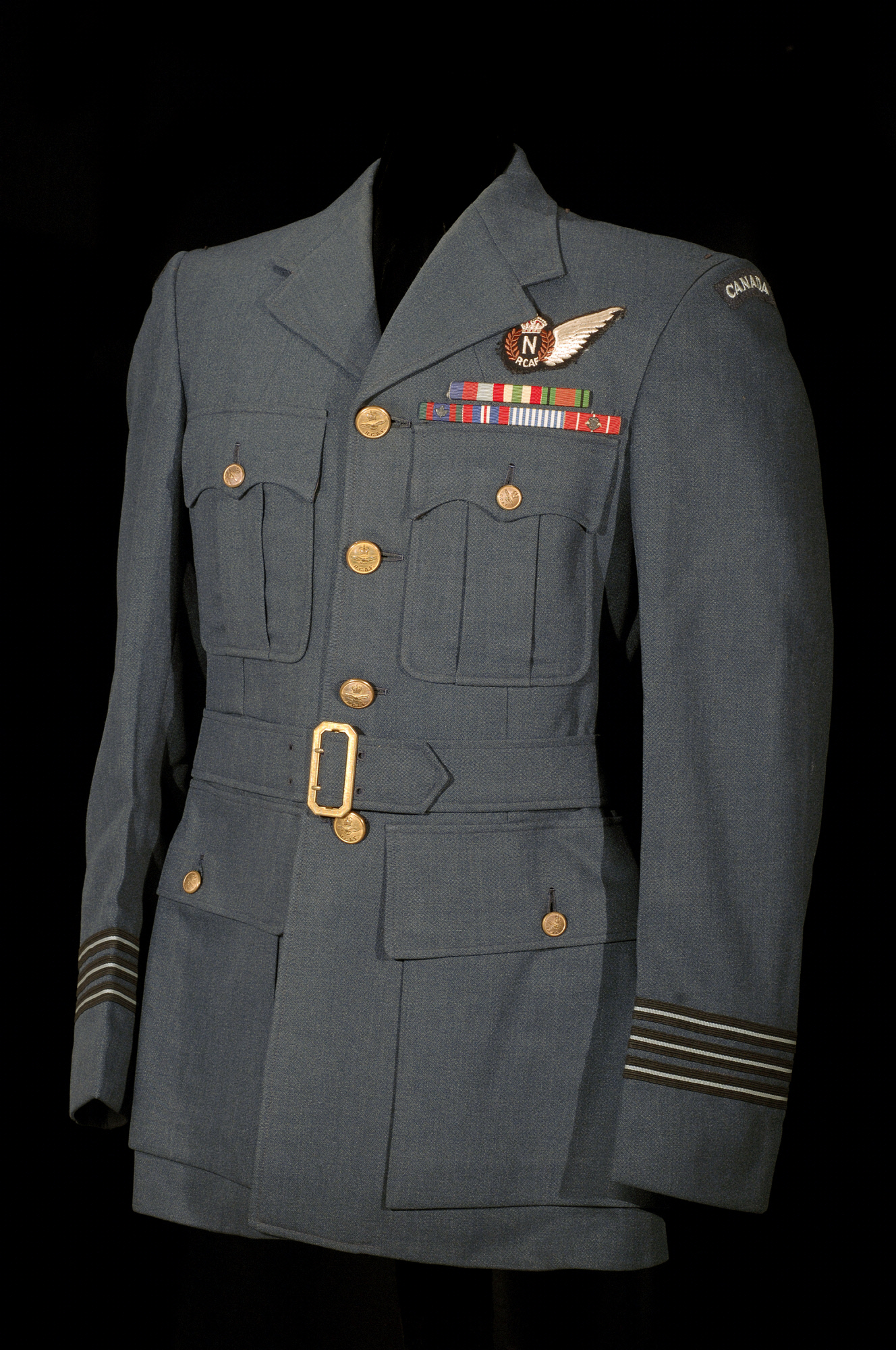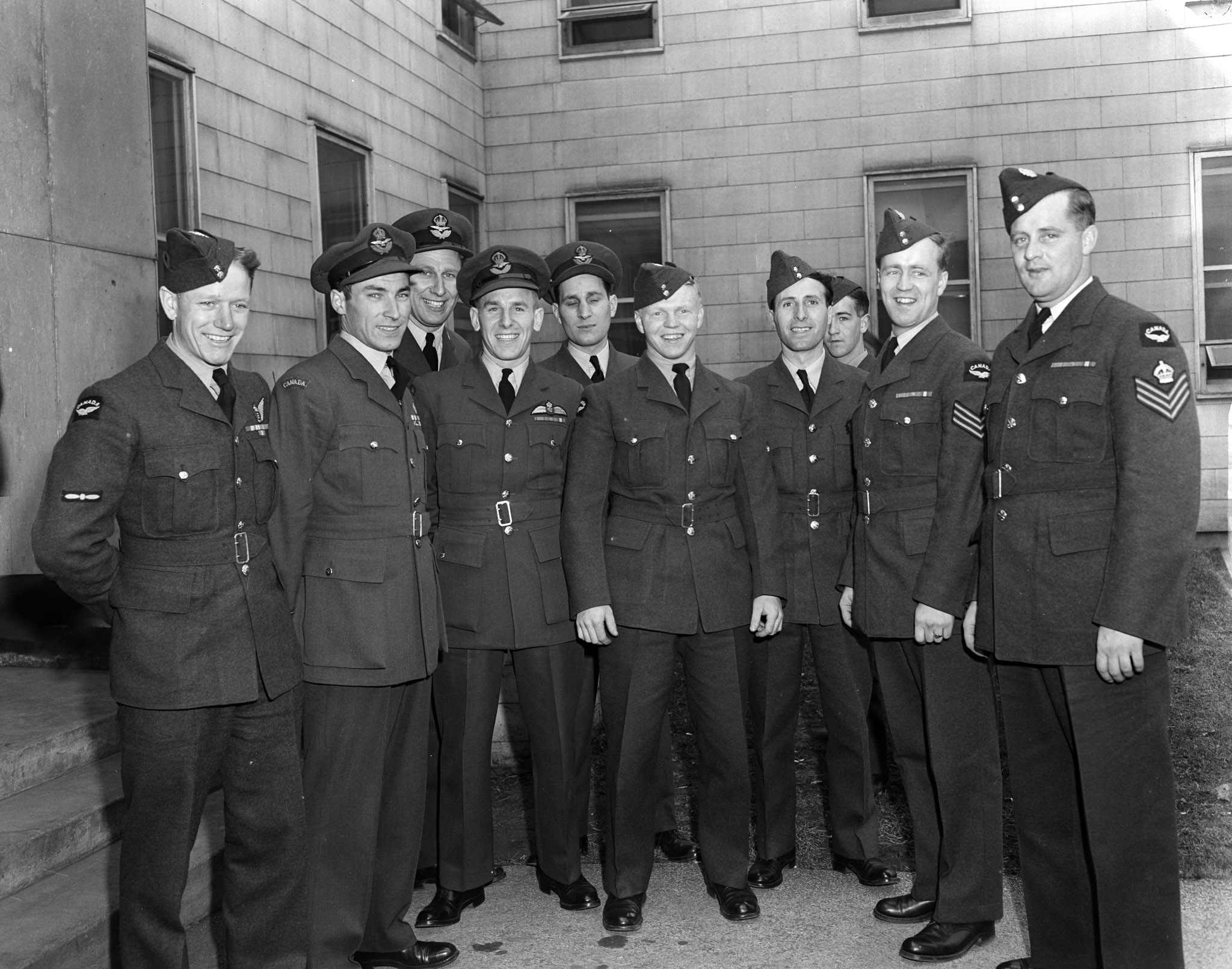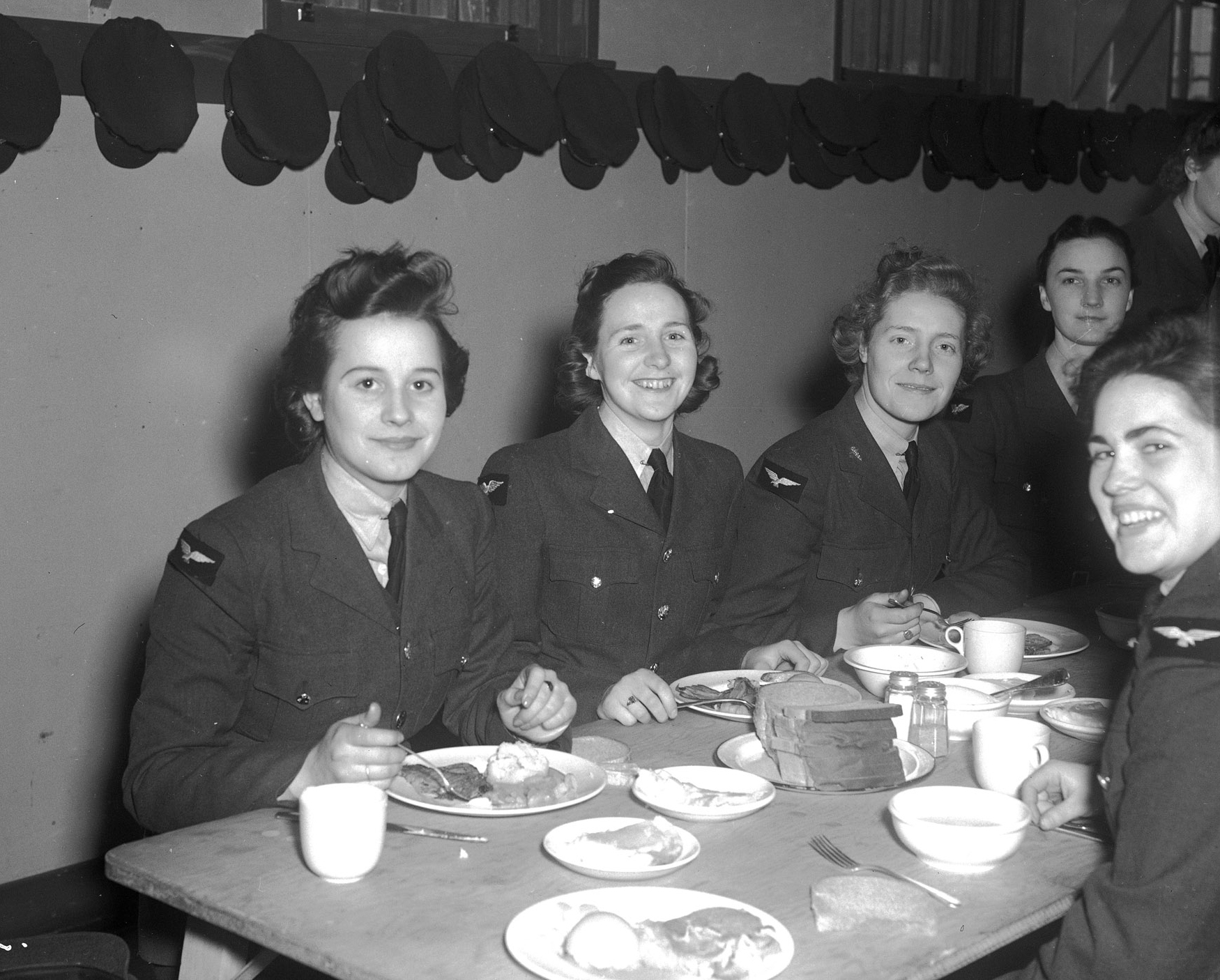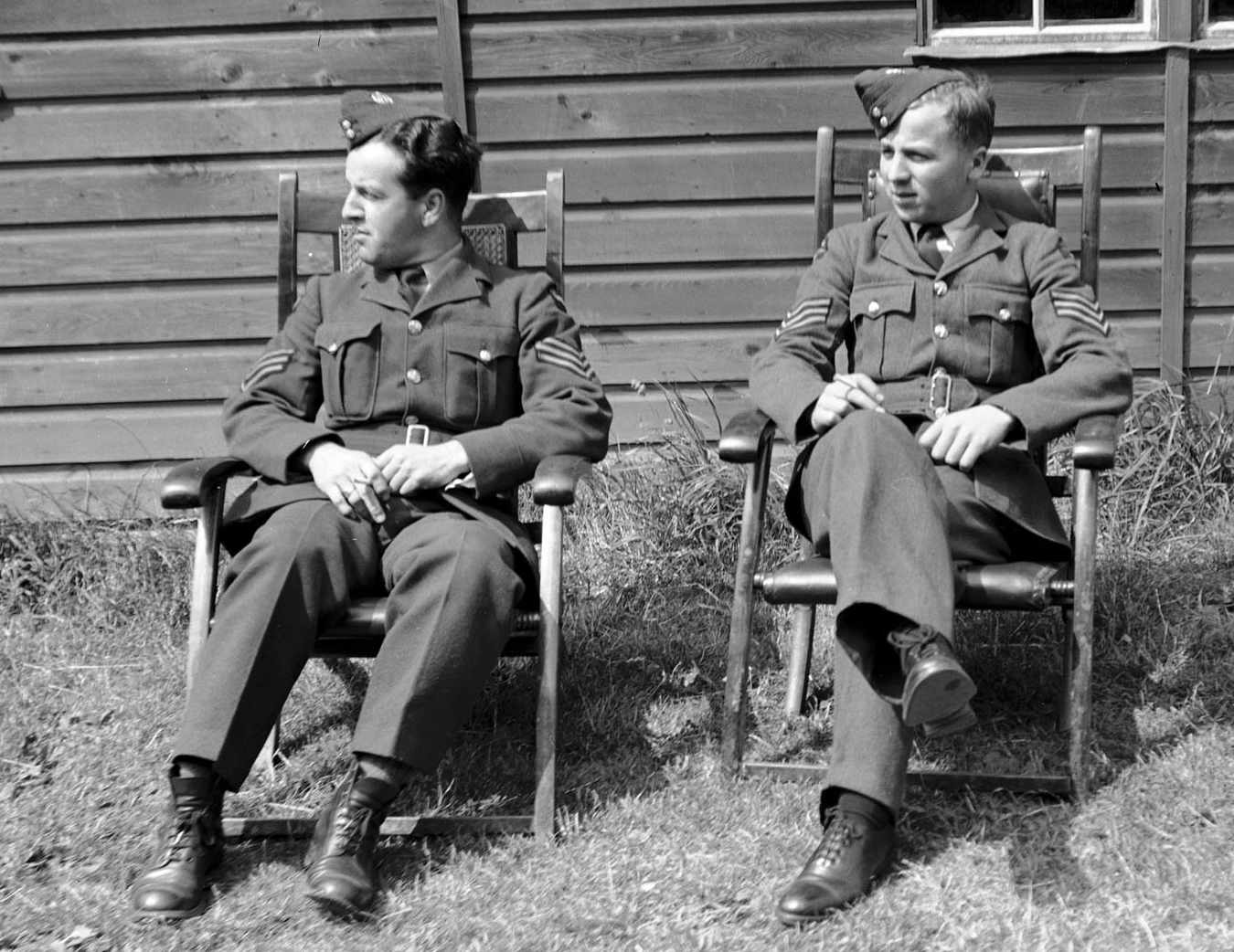A return to the Royal Canadian Air Force ranks: A historical examination
News Article / September 26, 2014
By Lieutenant-Colonel John Alexander
This article was originally published in a longer form, with footnotes, in the Winter 2014 edition of The Royal Canadian Air Force Journal.
The Government of Canada has recognized the history of the various environments of the Canadian Forces through the re-introduction of the title “Royal” within the Royal Canadian Navy (RCN), the Royal Canadian Air Force (RCAF) and certain line units of the Canadian Army. Other recognitions such as utilizing the executive curl on naval ranks, the use of the Naval Jack and returning to the pips and crowns of the Army led to some personnel in the RCAF pondering whether a return to traditional RCAF ranks will be forthcoming. It is important to recognize that the history which we choose to recognize was not easily arrived at in the first place. . . . Many of the same considerations of developing an RCAF esprit de corps, independent of the other environments, are as relevant today as they were at the birth of our Air Force.
Though the RCAF chooses to recognize April 1, 1924 as its formation date, the history of the Canadian Air Force (CAF) extends back further to the establishment of a Canadian wing in Europe which “became operational nine days after the First World War had ended.”
Demilitarization post-First World War was the first challenge of a burgeoning air force. At the time, “middle-ranking civil servants in Ottawa” took up the challenge of “converting the expansive potential of aviation, so clearly demonstrated in war, to constructive peacetime uses.”
“[T]he government delegated responsibility for aviation to an autonomous Air Board in the summer of 1919.” This Air Board was primarily concerned with conserving the aviation experiences of the First World War through the promotion of civil flying. The military arm of the Air Board, the Canadian Air Force, was established along militia lines. Colonel Oliver Mowat Biggar, “one those few middle-ranking personnel in Ottawa,” proposed the formation of the Canadian Air Force “as a non-permanent service” in November 1919 to work alongside the civil aviation division under the control of the Air Board.
The government accepted the argument for the creation of the Canadian Air Force in February 1920, and Sir Willoughby Gwatkin became the first inspector general of the Canadian Air Force in April 1920 with Air Commodore A. K. Tylee appointed as air officer commanding. The decision to have this militia arm within the Air Board was not universally accepted and, indeed, almost did not happen.
The question of whether Canada would even have an air force was best summed up by then leader of the opposition, William Lyon Mackenzie King, when he asked in the House, “Where does the Minister expect invasion from? … defence against whom[?]”
The concept of an Air Board was not novel. The United Kingdom had established an Air Board in 1916 and replaced it with an Air Council in 1917. However, unlike Canada’s Air Board, the developments of command and control of air power in the United Kingdom were centred on the military aspects only.
The initial Canadian Air Force headquarters opened May 17, 1920 at 529 Sussex Street in Ottawa and consisted of six personnel: Wing Commander R. F. Redpath, Flight Lieutenant G. J. Blackmore, Warrant Officer H. H. Atkinson, Flight Sergeant F. Aldridge and Sergeant A. H. McKay. With such a small headquarters, initial Canadian Air Force regulations were adapted from those of the Royal Air Force (RAF). The Canadian Air Force chain of command for the first air officer commanding was a relatively direct line through the inspector general to the Air Board.
While the initial cadre of Canadian Air Force officers and enlisted men were considered “in continuous service but on inactive, unpaid leave except when on refresher training,” their ranks were transferrable from their former Royal Air Force (RAF) or army ranks held during the First World War, once they completed their first training period. Hence, both RAF and traditional army ranks were acceptable and used interchangeably at the discretion of the holder.
In the earliest days, the choice to use army or RAF ranks seemed to be along civil versus military flying duties. Quite often, members employed the army ranks when flying in support of the civil branch of the Air Board. The same individual would then utilize the air-force rank when flying within the military branch. The rank structure laid down for the Canadian Air Force included: air vice-marshal, air commodore, group captain, wing commander, squadron leader, flight lieutenant, flying officer, pilot officer, warrant officer, flight sergeant, sergeant, corporal, air mechanic (1st class) and air mechanic (2nd class).
As mentioned, the Air Board was comprised of two flying divisions—the civil and the Canadian Air Force—and would remain a dual system until 1922. It was not until the elimination of the dual system that the concurrent usage of army and air-force ranks within the Air Board was resolved. This was eloquently demonstrated in Camp Borden’s routine orders of 28 November 1922, wherein it stated: “The use of Military Equivalent of Canadian Air Force ranks will be discontinued throughout the Service forthwith and only the ranks hereunder quoted (i.e., group captain to pilot officer) will be used both in correspondence and conversation.”
On January 1, 1923, the former Air Board (predominantly civilian in nature prior to this point) was consolidated within the Canadian Air Force under the newly formed Department of National Defence, under the control of the chief of the general staff. Although discussion of seeking the “Royal” designation had preceded the amalgamation of January 1, 1923, application for said designation was not made to the Secretary of State for External Affairs until January 5, 1923. Formal reply from the Secretary of State for the Colonies in England was received on February 15, 1923. Weekly Order No. 21/23 on March 12, 1923, promulgated the new title “Royal Canadian Air Force”. Although the promulgation of “Royal” within the title was conferred in 1923, it was not formally adopted until 1 April 1924.
Prior to the official designation of the Royal Canadian Air Force, uniforms were loosely styled on the army dress, with army-style rank badges (pips and crowns). Afterwards, it was decided to adopt the dress and motto of the RAF, and the uniform was patterned on the RAF uniform of the day. These changes would remain extant until unification on February 1, 1968.
As an aside, the translation of Royal Canadian Air Force to French was not resolved until June 1940, thereafter referred to as Corps d’aviation royal canadien, abbreviated as CARC.
The date April 1, 1924, which we now celebrate as the “official” birthdate of the RCAF, was significant in that the new King’s Regulations and Orders (KR&O) for the RCAF were now completed after two years of staff work and came into effect on this date. It also marked the commencement of the new fiscal year, after which the new pay and allowances could be administered. It also marked the date after which the use of the “Royal” designation was now approved by KR&O. As demonstrated, however, the true date for the birth of Canada’s Air Force could have been much earlier.
With the adoption of the KR&O for the RCAF, largely based on the Royal Air Force and the United Kingdom Force Act, the enlisted ranks were adjusted to the following: warrant officer 1st class (WO1), warrant officer 2nd class (WO2), flight sergeant (FS), corporal (Cpl), leading aircraftman (LAC), aircraftman 1st class (AC1) and aircraftman 2nd class (AC2). No significant changes were made to officer ranks with the exception of adding air marshal and air chief marshal.
The Royal Air Force had arrived at this rank structure as a means of severing the Air Force from the other services. The intent was “to preserve and emphasise the principle of the independence and integrity of the Royal Air Force as a separate service among fighting services to the Crown” while recognizing the requirement for the Air Force to serve the special needs of the both the Army and the Navy “in addition [to having] a strategic and tactical sphere of action independent of the other two fighting services.”
Just as Canada’s burgeoning Air Force was seeking its independence, so too, the Royal Air Force was seeking to establish itself as a credible and independent force separate from the Army and the Royal Navy. Canada automatically adopted the Royal Air Force ranks for use in the RCAF when it based the RCAF KR&O upon the Royal Air Force KR&O and the United Kingdom Force Act.
These ranks would remain in effect in the RCAF until unification many years later in 1968. During the Second World War, gender-specific language would be included in the rank titles, such as aircraftman/aircraftwoman, to address the inclusion of women in uniform. Concurrent with the maturing of the RCAF, questions were already beginning to arise about dedicated air support to the Navy.
Even before unification in 1968, the use of the RAF rank structure within the RCAF was not without some controversy. In a memorandum to the RCAF Senior Advisory Group in February 1965, the author (Deputy Chief of Personnel) suggests that the titles, “in many instances, originated with the Royal Naval Air Service and later were adopted by the Royal Flying Corps, which in turn became the RAF in 1918.” Principal among the arguments was that the ranks in use by the RCAF were no longer indicative of the officer’s function as it was 40 years previously when the ranks were created. Other arguments included the lack of one-word ranks, thus leading to confusion among the public.
RCAF ranks also did not easily translate into French whereas the Canadian Army ranks did. Lastly, in 1965 it was considered advantageous to adopt the Canadian Army rank structure as it was similar to the rank structures used by the other members of the United Nations and the North Atlantic Treaty Organization with whom the RCAF could be expected work alongside on operations. The recommendation of this report was to retain the rank insignia but adopt the Canadian Army rank titles as this result would be “the best of both choices.”
Prior to unification in 1968, the Canadian Army and the RCN had developed aviation and air arms of their own, which did not belong to the RCAF. Based on this, questions arise today among the tactical aviation and maritime aviation communities as to whether it would even be appropriate to return to RCAF ranks. The question is a little more complicated in that those aviation arms, as will be demonstrated, had closer links to the RCAF than many of today’s aviators realize.
In Canada, the division of aviation in direct support to the Navy evolved gradually. On September 5, 1918, the Royal Canadian Naval Air Service was established by Order in Council, only to be disbanded three months later following armistice.
This creation reflected the significant contributions of Canada’s airmen flying in the Royal Flying Corps and the Royal Navy Air Service throughout the First World War. However, as Canada had no ships capable of launching and recovering aircraft after the First World War, the RCN Naval Air Service had little chance of survival.
Slow development continued in shore-based support to the RCN such that by September 15, 1938, Eastern Command was established to monitor the territorial waters off Canada’s coast. This is not to suggest that aviation in support of the Navy did not exist prior to 1938. In fact, RCAF Station Dartmouth had, at this point, existed for almost two decades, as did RCAF Station Vancouver—seaplanes flew from both locations.
Maritime Group was subsequently formed in April 1949 and, finally, Maritime Air Command in January 1951. “Maritime Air Command was absorbed into the Canadian Forces Maritime Command in January 1966 … .”
The post-war years also saw the emergence within Army circles of a sincere interest in aviation. RCAF acquisition plans for new transport planes evolved in close consultation with the Army (the Army fearing RCAF requirements might not appropriately address their requirements).
Similar to the RCN’s emergence of a full aviation capacity, the Army developed aviation capabilities such as air observation post throughout the period 1946 to 1975, culminating in the formation of 10 Tactical Air Group in September 1968. 10 Tactical Air Group included two CF-5 fighter squadrons, T-33 reconnaissance aircraft, Buffalo tactical transport and a variety of helicopters for transport and observation/reconnaissance. In September 1975, the Canadian Armed Forces “retreated slightly from unification … upon the establishment of Air Command.” It would become “the focal point of tradition and professional expertise for airmen of the Canadian forces.”
The process of unification, which culminated in February 1968, had actually begun in 1964 in an effort to eliminate duplication in recruiting, training and other aspects of military support, such as a unified pay system.
This single command structure under the Chief of the Defence Staff made perfect sense. Unification resulted in the abolition of distinctive uniforms in favour of the “Jolly Green Jumpers” and the elimination of RCAF ranks, among many other changes.
Whereas the Navy vehemently fought the aspects of unification that would threaten their history and heritage, it is suggested that many in the senior ranks of the RCAF silently retired without fuss or learned to accept the changes without dissent. Even this interpretation that the RCAF senior ranks retired silently without fuss is not universally held. Lieutenant-General William Carr (retired), the first commander of Air Command in 1975, was an air commodore in 1968 at the time of unification. He holds no recollection of any senior officer retiring as a result of unification. The memorandum of 1965 to the RCAF Senior Advisory Group substantiates his recollections. It appears, from at least this one source, that the RCAF was in favour of adopting Army ranks, and it was approved by the Air Council just prior to unification in 1968.
This brief historical visit of the evolution of the RCAF leads to the current discussion. The latest amendment to the National Defence Act (NDA), dated 19 June 2013, retains the provision for the re-establishment of an RCAF rank structure. Notably, master corporal is not represented on the chart under any of the three environments. However, as master corporal is an appointment, it is not considered a “rank” by definition of the NDA. The ranks are provided in Table 1.
| Unification Ranks (Column I) |
RCAF Ranks (pre-unification) (Column IV) |
|
|---|---|---|
| English | English | French |
| General | Air Chief Marshal | Maréchal en chef de l’Air |
| Lieutenant-General | Air Marshal | Maréchal de l’Air |
| Major-General | Air Vice-Marshal | Vice-maréchal de l’Air |
| Brigadier-General | Air Commodore | Commodore de l’Air |
| Colonel | Group Captain | Colonel d’aviation |
| Lieutenant-Colonel | Wing Commander | Lieutenant-colonel d’aviation |
| Major | Squadron Leader | Commandant d’aviation |
| Captain | Flight Lieutenant | Capitaine d’aviation |
| Lieutenant | Flying Officer | Lieutenant d’aviation |
| Second Lieutenant | Pilot Officer | Sous-lieutenant d’aviation |
| Officer Cadet | Officer Cadet | Élève-officier |
| Chief Warrant Officer | Warrant Officer Class | 1 Adjudant de 1re classe |
| Master Warrant Officer Warrant | Officer Class 2 | Adjudant de 2e classe |
| Warrant Officer | Flight Sergeant | Sergent de section |
| Sergeant | Sergeant | Sergent |
| Corporal | Corporal | Caporal |
| Private | Aircraftman | Aviateur |
Section 21(2) of the National Defence Act currently permits for the usage of other rank designations. All that is required is a change in regulation by Governor in Council “prescribing the circumstances in which a person holding a rank set out in Column I of the schedule shall use, or be referred to by, a designation of rank set out in Column II, III or IV of the schedule opposite the rank held by that person.”
